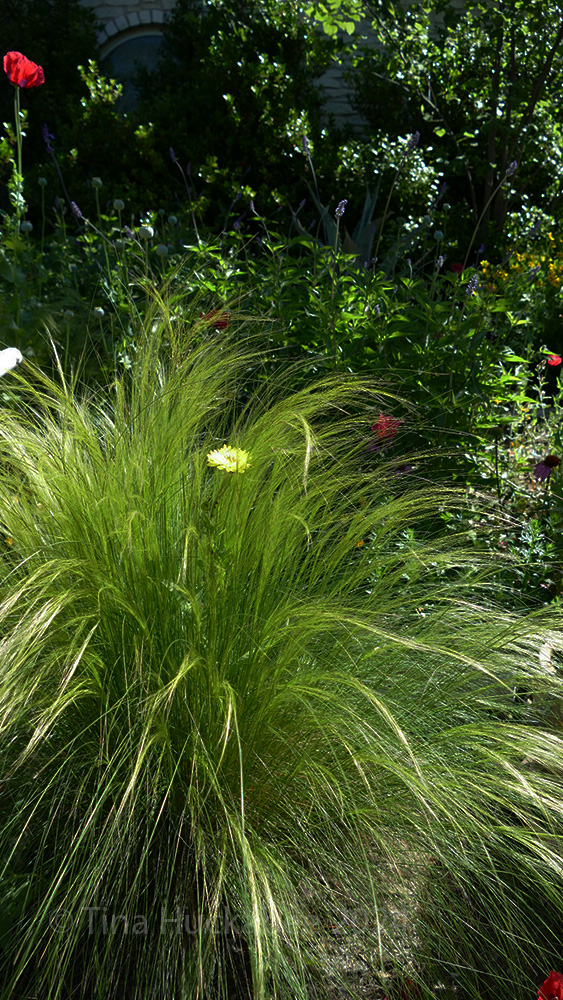On yesterday’s walk around the neighborhood with Duke the Dog, I saw some Texas Dandelions, Pyrrhopappus pauciflorus. Several are growing in neighbors’ lawns, others rise up from cracks in walkways; they grow where they land and aren’t picky plants. I lamented that none of these cheery plants had so far appeared in my own garden yet, though they typically show up, where they like, pleasing this gardener and providing for the pollinators. The non-native dandelions have bloomed since February, and are mostly done. I certainly don’t mind those flowers as they serve as an early source of nectar for the honeybees and other pollinators that wing through the late winter garden.
On this bright, cool morning I spied a sunny, Texas dandy bloom, stem and leaves holding the buttery bloom aloft, as it cuddles with a Mexican Feathergrass, Nassella tenuissima.

A different view of this pretty pair also shows some European poppies dotting the background, along with new bloom spikes of Henry Duelberg Sage, Salvia farinacea.

The only thing that would make these scenes better would be some pollinators in action. Alas, the chilly wind this morning probably slowed their work.
Nevertheless, it’s so nice to see you–all of you! Happy Spring, y’all!






